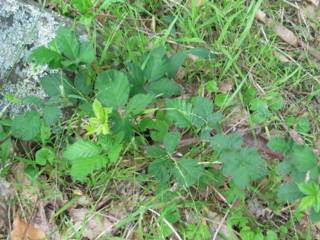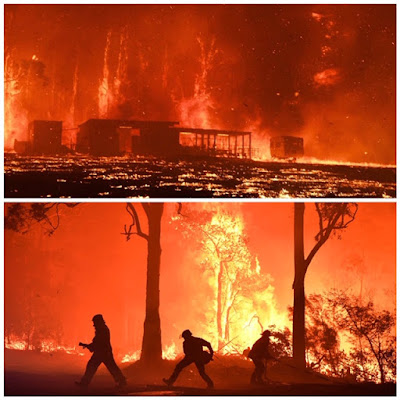
Cabernet Sauvignon in November
The Cabernet Sauvignon is in flower. Each individual flower loses its “cap”, which, unusually, are the flower petals joined at the top. Because domesticated grapevines have perfect flowers ie. they contain both male and female parts, five stamens and a pistil are exposed. This enables grapevines to be self-pollinating. The stamens contain the pollen and the pistil contains the ovary.

Cabernet Sauvignon in Flower
Pollination usually occurs by wind distribution together with some help of insects. Heavy wind conditions and rain hinder pollination however. It will be some time until we know how many of the flowers have been successfully fertilised and what the resultant level of fruit set will be. This will then determine the size of the bunches. Each flower represents one potential grape berry.
It will be soon be time to spray the vines, or more specifically the newly forming bunches against the fungal disease, botrytis (grey mould). This is done at 80% capfall (and again before bunch closure). The spores of this particular fungus lodge within the inflorescences and can lie dormant until bunches are well developed before conditions encourage mould growth. Then it is too late to spray.

New Semillon Block in November
The new Semillon continues to grow well. Many of the vines are reaching the stage when the main vertical shoot needs to be cut (topped) to promote the growth of two upper lateral shoots that will eventually become the permanent arms (cordon) of the vine. The vine is cut through a node just above or below the cordon wire. Then it is attached by string from this cut node to a foliage wire in a continued effort to keep the developing trunk straight.

Semillon Grown to Foliage Wire
All but the top 2 laterals are then removed. Due to the apical dominance of grapevines, these two laterals will begin to grow quite vigorously and will be eventually trained along the cordon wire. It is important that these two shoots are between 10cm and 15cm below the cordon wire so that the angle between the trunk and the cordon is sufficient to provide strength for the arms to support the weight of shoots and fruit in the coming years.

Semillon "Topped" and Tied
The Tempranillo is disappointingly slow in growth. Despite the good conditions and the application of nitrogen fertiliser only a few have reached the top of the vineguards. It is possible that two years of drought and their resultant longer than normal stay in the seedbed has negatively affected them. It is a matter of wait and see.
The same cannot be said for the Pinot Noir. After a slow start many of the vines are at the top of the vineguards and it may be time to think about a wallaby fence to protect them.
In the meantime I have been in the process of buying a new car. Instead of running around dealers trying to get the “best” deal, I used a broker via the internet for the first time. It appears that I have saved about $A3000 off the recommended retail price by doing this. The Subaru Forester, red of course, will be ready for delivery sometime this week.

































